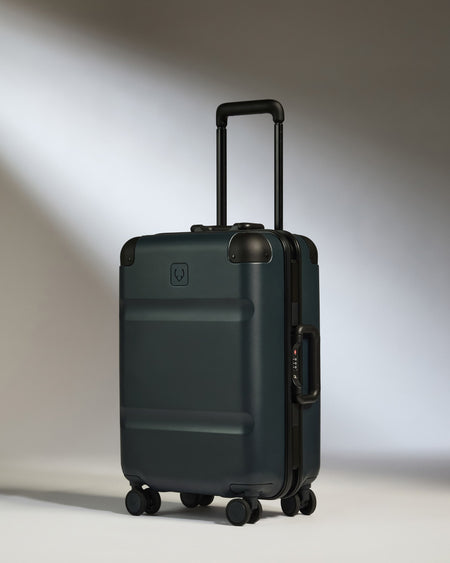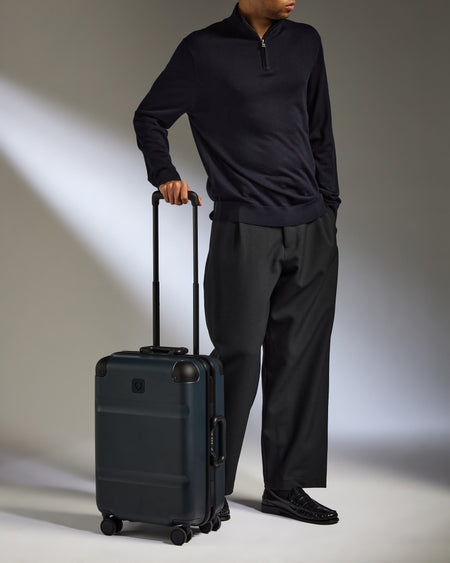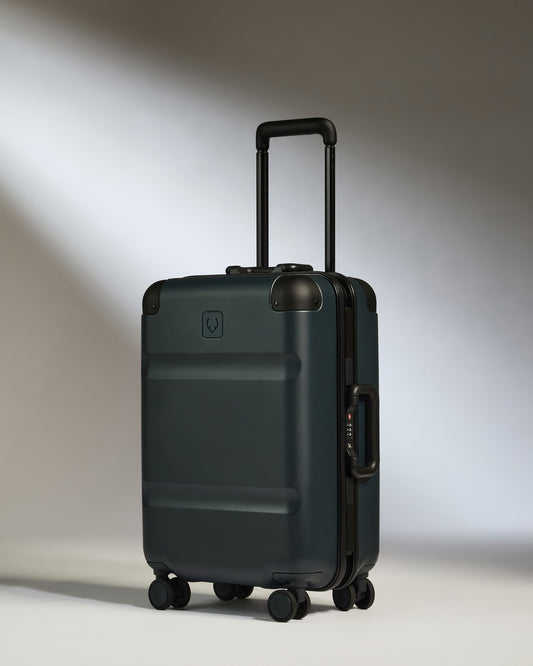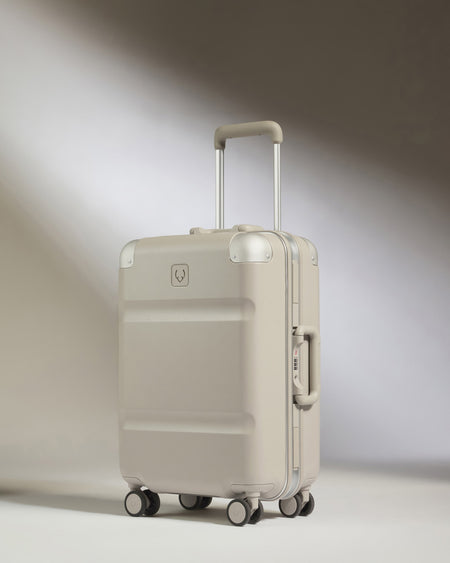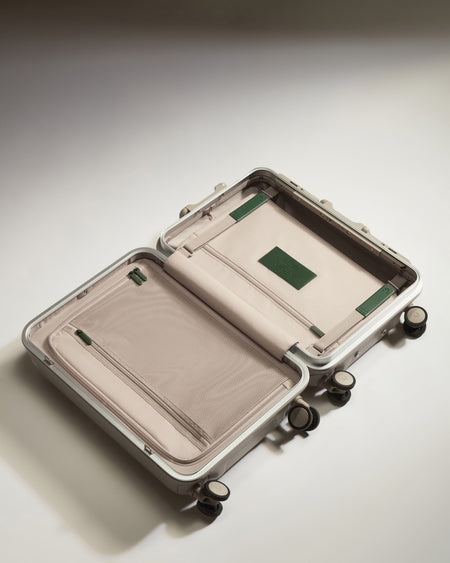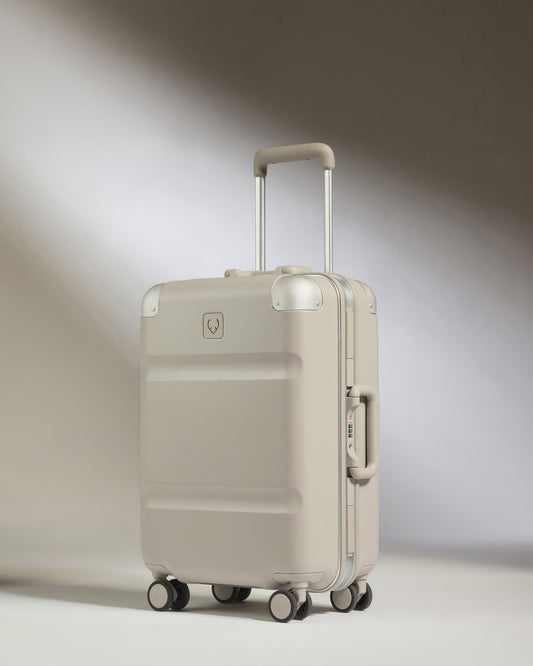Every element of the Heritage Collection is purposefully designed and thoughtfully chosen.
To mark over 110 years of British design, Antler’s team went back to the drawing board – deconstructing what travellers have long loved about our suitcases to rebuild a classic travel companion for the future.
We sat down with Kirsty Glenne, Antler’s Managing Director, and James Holt, Product Design Director, to unpack how the Heritage Collection came to life – from the brand vision that shaped it, to the design decisions that brought it into reality.


Q&A
The starting point for this collection was Antler’s 110-year Heritage. What does that legacy mean for the brand today?
Kirsty: We wanted to design a collection that recognised the brand’s 110-year legacy, but that also reflected Antler as a modern British brand. This was never going to be a history project, but one that sets the brand up for the future. It was important that there was a nod to the past, but the product had to be innovative and show progress.
This was never going to be a history project, but one that sets the brand up for the future.
Kirsty Glenne
James: It’s easy to focus on aesthetic cues from our archive, but designs soon feel pastiche when you do that. We needed the collection to be rooted in something more substantial – and for us, that was the feel you got from historic Antler products.
The recurring feedback was how a vintage Antler suitcase would sound when it closed. The reassuring ‘click!’. We spent two years engineering a lock for the Heritage Stripe suitcase that gave us the same feeling, updating the materials and modernising the technology.

How did you approach going back to the Antler archive?
Kirsty: Antler has always had a loyal customer base who care about quality and practicality, but we’re seeing a new generation of travellers who want that and a sense of style, permanence, and identity. When we went back to the archive, we wanted to ensure the collection spoke to both – reminding ourselves why Antler made the things it did, and why people connected with them. This wasn’t nostalgia for nostalgia’s sake. The new collection had to earn its place in people’s lives today.
This wasn’t nostalgia for nostalgia’s sake. It had to earn its place in people’s lives today.
Kirsty Glenne
James: As a function-driven design studio, we always start with purpose. We wanted to understand why features were created the way they were and what challenges they were solving. Two archival pieces stood out as inspiration for this collection – a 1950s leather trunk and a rather serious-looking 1960s suitcase. Once we handled the latch closure on the suitcase, we knew we had to find a way to bring it back.
Kirsty: What struck me about the 1950s trunk, for example, was its proportions – they’re lovely, evoking a nostalgia for a bygone era of slower, more intentional travel. Designed to hang clothes inside, free from modern airline restrictions, it was a private space you could travel with. There’s something quite romantic about that idea.


Why do you think people hang onto their Antler pieces for so long?
Kirsty: If you speak to someone who owns a vintage Antler bag, there’s a real fondness. We still get contacted by people who received an Antler suitcase set as a wedding present. It’s such a great gift when you think about it, because it’s really a gift that enables travel and adventure over a lifetime.
When we talk about designing for longevity, that goes beyond function. This idea that a suitcase could be handed down, or be part of someone’s most memorable moments, is something we think about when we’re designing new collections today.
This idea that a suitcase could be handed down is something we think about when we’re designing new collections today.
Kirsty Glenne
James: That kind of story and emotional connection is gold for a product designer. The dream is to create something with real staying power – a design that will live in people’s memories and homes for decades.
And yet, we didn’t want to be trapped by nostalgia. The challenge was creating something that felt grounded in Antler’s DNA, but uncompromising in innovation. As a design team, we see ourselves as custodians of the brand. We don’t believe in styling features if they don’t do anything. Everything in this case is there for a reason.
We don’t believe in styling features if they don’t do anything. Everything in this case is there for a reason.
James Holt

How does the Heritage Collection move things forward?
James: Outside, the two ‘Antler Stripes’ running across the premium-grade polycarbonate shell make the suitcase tougher under impact – but they also nod to the way vintage trunks used to be strapped on top of cars! We wanted to make that sense of nostalgia useful to how the case functions, rather than purely an aesthetic feature.
The Heritage Stripe Cabin and Trunk are constructed around a lightweight aluminium frame that adds strength and gives the collection its distinctive character. The frame is a slightly different colour from the shell – a subtle way to celebrate its robust structure, rather than hiding it. Even the corners are functional, made from hard-anodised aluminium that outperforms plastic in impact tests, while adding another visual echo of classic luggage design.
Inside the case, we brought back the vintage-inspired strap to keep clothing compressed, but reengineered them with a Velcro that won’t catch on clothes. It’s always that balance: pay tribute, but don’t compromise.
What kind of legacy do you want this collection to leave?
Kirsty: What we’ve created is something that feels both familiar and entirely new. A future classic that’s built to be part of people’s lives, holidays, adventures for decades – and perhaps generations – to come. That’s what Antler is about now: meaningful design for the modern journey.


